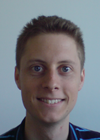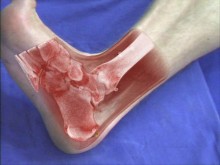Stuart Holdstock |
 Chair for Computer Aided Medical Procedures & Augmented Reality
Chair for Computer Aided Medical Procedures & Augmented RealityFakultät für Informatik Technische Universität München Boltzmannstr. 3 85748 Garching b. München Germany E-Mail: Phone: +49 89 289-17073 Skype: sholdsto Fax: +49 89 289-17059 Room No.: MI 03.13.059 |
Research Interests
- Augmented Reality - Head Mounted Displays displaying Augmented Medical Images
- Navigation and Computer Aided Surgery
Theses and Projects under my (Co-)Supervision
- (finished) Improving Depth Perception for Video-Based, Intraoperative Augmented Reality Systems. by Maxim Kipot (Master Thesis)
- (finished) Design, Development and Evaluation of a Multimodal User Interface for Medical In-Situ Visualization by Samuel Kerschbaumer (Diploma Thesis)
Research Projects
Improving Depth Perception and Perception of Layout for In-Situ Visualization in Medical Augmented RealityIn-situ visualization in medical augmented reality (AR) using for instance a video see-through head mounted display (HMD) and an optical tracking system enables the stereoscopic view on visualized CT data registered with the real anatomy of a patient. Data can aligned with the required accuracy and the surgeons do not have to analyze data on an external monitor or images attached to the wall somewhere in the operating room. Thanks to a medical AR system like mentioned before, surgeons get a direct view onto and also ”into” the patient. Mental registration of medical imagery with the operation site is not necessary anymore. In addition surgical instruments can be augmented inside the human body. Bringing medical imagery and surgical instruments in the same field of action provides the most intuitive way to understand the patient’s anatomy within the region of interest and allows for the development of completely new generations of surgical navigation systems.Unfortunately, this method of presenting medical data suffers from a serious lack. Virtual imagery, such as a volume rendered spinal column, can only be displayed superimposed on real objects. If virtual entities of the scene are expected behind real ones, like the virtual spinal column beneath the real skin surface, this problem implicates incorrect perception of the viewed objects respective their distance to the observer. The strong visual depth cue interposition is responsible for misleading depth perception. This project aims at the development and evaluation of methods to improve depth perception for in-situ visualization in medical AR. Its intention is to provide an extended view onto the human body that allows an intuitive localization of visualized bones and tissue. |
3D user interfaces for medical interventionsThis work group aims at practical user interfaces for 3D imaging data in surgery and medical interventions. The usual monitor based visualization and mouse based interaction with 3D data will not present acceptable solutions. Here we study the use of head mounted displays and advanced interaction techniques as alternative solutions. Different issues such as depth perception in augmented reality environment and optimal data representation for a smooth and efficient integration into the surgical workflow are the focus of our research activities. Furthermore appropriate ways of interaction within the surgical environment are investigated. |
| UsersForm | |
|---|---|
| Title: | Master |
| Firstname: | Stuart |
| Middlename: | |
| Lastname: | Holdstock |
| Picture: |  |
| Birthday: | |
| Nationality: | Cosmopolitan |
| Languages: | English, German |
| Groups: | Medical Augmented Reality |
| Expertise: | |
| Position: | Scientific Staff |
| Status: | Inactive |
| Emailbefore: | stuart.holdstock |
| Emailafter: | in.tum.de |
| Room: | MI 03.13.059 |
| Telephone: | 49 89 289 17073 |
| Alumniactivity: | |
| Defensedate: | |
| Thesistitle: | |
| Alumnihomepage: | |
| Personalvideo01: | |
| Personalvideotext01: | |
| Personalvideopreview01: | |
| Personalvideo02: | |
| Personalvideotext02: | |
| Personalvideopreview02: | |


